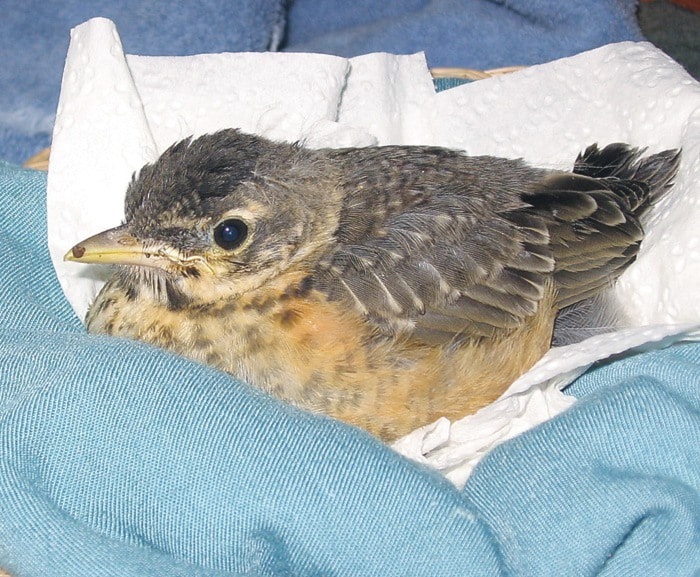One of the first song birds to arrive back in our local area from their winter migration is the American robin.
The largest members of the thrush family, robins are probably the one species that everyone recognizes. Adult plumage is unmistakable especially the breeding males with their brilliant rufous-cinnamon breasts, dark grey heads and wings and dark beady eyes outlined in white.
The females are similar to the males’ coloration but are duller than the vibrant males; juveniles have speckled breasts.
Robins have longer beaks than most song birds that are designed for pulling and probing, which they need to pull earthworms from the ground. It is fun to watch a robin locate the worm by sight and sound and then begin the tug of war; often they will use their wings to retain their balance whilst pulling out a reluctant worm.
Robins also have strong sturdy legs enabling them to run and hop along the ground.
These birds are one of the first birds to start the dawn chorus and one of the last to stop singing at dusk; they have a large repertoire of songs, some melodious others raucous alarm calls if their nest or territory are threatened by an intruder. Found throughout North America, robins were originally forest dwellers but have gradually adapted to a variety of habitats including urban areas where they thrive in parks, golf courses, open spaces and backyards.
Earthworms are the robins’ favourite food choice but they supplement their diet with seasonal fruits and berries and the young are fed earthworms and insects whilst in the nest. An expandable oesophagus (throat) enables them to collect and store large quantities of worms that they can transport back to the nest for the young or keep in reserve to sustain them through the night.
Robins also take the honours in producing the first babies and Mountainaire Avian Rescue Society (MARS) has already received the first baby robin for this year.
Females construct a cup shaped nest from dry grasses, small twigs, horse hair, plastic scraps or anything that takes their fancy. These well designed nests take six days to construct with over 150 trips a day to collect materials. The final touch to the nest is a custom made lining of mud mixed with saliva that the female transports in her mouth. Whilst the mud is still damp, she will sit in the nest moulding the mud to fit her body ensuring a safe, tight-fitting nest for the young. On average, six eggs are produced and robins will often produce two clutches in one season. Incubation of the eggs takes between 12-14 days, and a further 12-14 days for hatchlings to fledge from the nest.
Hatchlings are naked and blind and totally dependent on the mother for food, warmth and protection.
Fledging, or leaving the nest, is a natural process and often the time when humans intervene thinking they have fallen out; as soon as the young have the strength to flap and attempt to fly they will jump, glide or fall from the nest and it takes them a few more days until they achieve lift off.
For more information on what to do if you find a baby bird, racoon, deer, or any other species, please check our web site at www.wingtips.org or call 250-337-2021.
